Kyoto Events in June 2024
In June 2024, Kyoto, Japan, offers diverse events and festivals that showcase the city’s rich cultural heritage and natural beauty. As the summer heat settles in, Kyoto becomes enveloped in lush greenery, creating a serene atmosphere for locals and visitors alike. June in Kyoto is also known for the vibrant blooming of hydrangeas, adding splashes of color and beauty throughout the city.
| Date | Event | Category |
|---|---|---|
| June 1st | Kifune Matsuri | Festival |
| Early June | Kyoto Takigi Nō | Performance |
| Early June | Taue-sai Rice Planting | Festival |
| Mid June | Ajisai Matsuri | Festival |
| First saturday of June | Umekoji Park Handicrafts | Market |
| Mid June | Takekiri-eshiki | Festival |
| Late June | Nagoshi no Harae | Purification rite |
| Mid June | Heian Raku Ichi Market | Market |
| June 21st | Toji Kobo Market | Market |
Kifune Matsuri
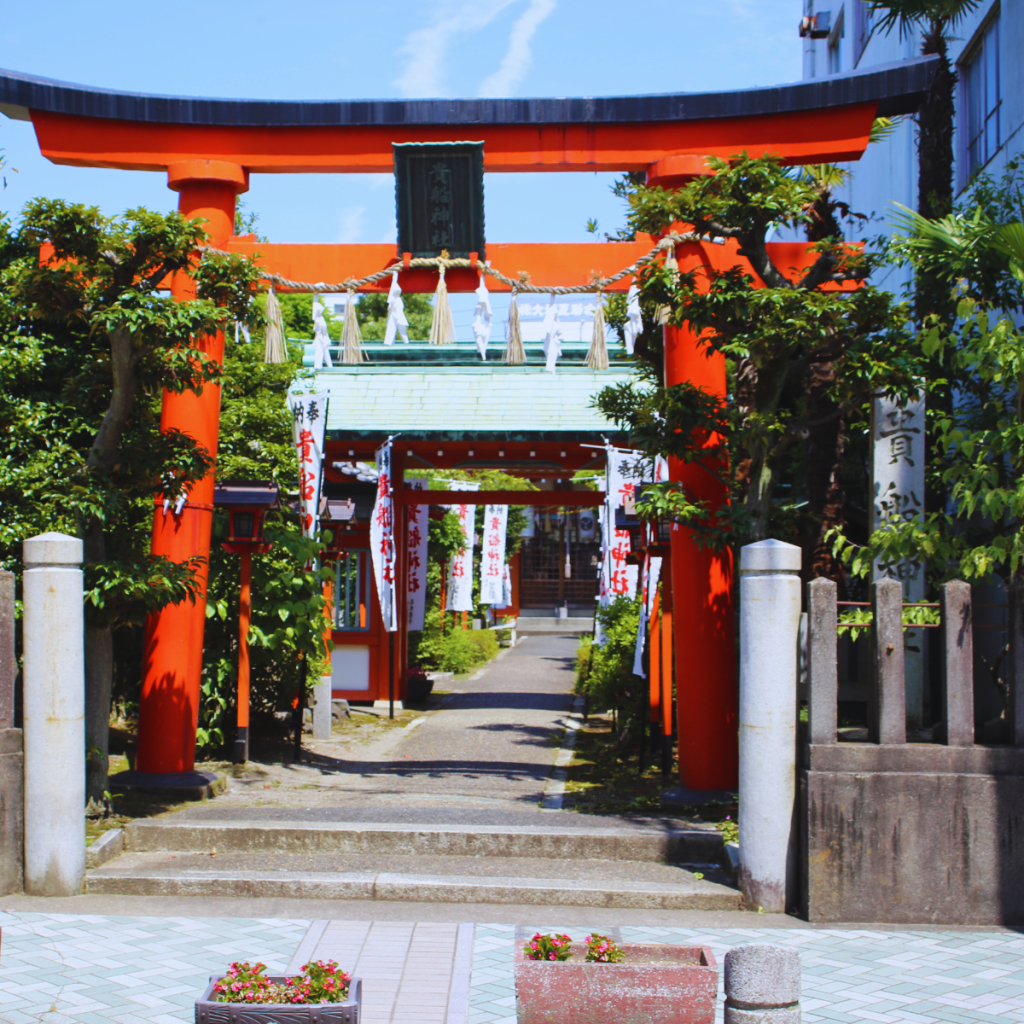
Date: June 1st, every year
A Thousand-Year-Old Tradition
Legend says that over a thousand years ago, the goddess Tamayori-hime appeared in Osaka Bay aboard a yellow boat, declaring that a shrine should be built and local spirits deified wherever the boat’s journey ended. That place became Kifune Shrine, located in the north of Kyoto City. Two local water gods were enshrined, and since then, Kyoto’s people have looked to Kifune Shrine for matters pertaining to rainfall and harvest.
The shrine is dedicated to the deity of water, Taka Okami-no-Kami, who provides rain, sun, and clouds. As such, he is also worshipped as the giver of life. Kifune Shrine is the head shrine of around 450 other Kifune shrines throughout Japan.
The Annual Kifune Festival
Kifune Shrine’s annual festival, Kifune Matsuri, is held on June 1st every year to pray for rainfall and good harvests. It is regarded as the most important event on the shrine’s calendar.
The festival begins in the main hall of Kifune Shrine with an elegant performance of Imperial Court music and dances carried out as offerings. The program may change yearly, but it always remains a major highlight of the celebration.
Afterward, participants carry a portable Mikoshi shrine housing the deity from the main hall toward Okumiya Shrine located behind it. This lively portion of Kifune Matsuri sees large crowds chanting energetically as they accompany the Mikoshi around town.
Prayers for Health and Growth
At Okumiya Shrine, children join in a special ceremony. They walk around a boat-shaped rock while praying for their health and growth. General admission visitors can even participate in this meaningful ritual themselves.
Izumo Kagura: A Mythical Performance
Another key element of Kifune Matsuri is Izumo Kagura, a Shinto music and dance offering based on one of the religion’s myths. In this story, God Susano’o saves an elderly couple’s daughter from being sacrificed to a multi-headed snake that had already devoured their other daughters. The performance features pyrotechnics and vibrant costumes, captivating audiences year after year.
The Izumo Kagura has been offered by head priests and shrine parishioners from Shimane Prefecture for the past 40 years. While visitors cannot participate in the performance, it is an unforgettable experience to witness.
Experience Kifune Matsuri
Encompassing ancient rituals, vibrant performances, and community spirit, Kifune Matsuri has truly flourished over its thousand-year history. If you have the opportunity to visit Kyoto in June, witnessing this sacred festival will not only leave you with unforgettable memories but also a deeper understanding of Japanese culture.
Kyoto Takigi Nō
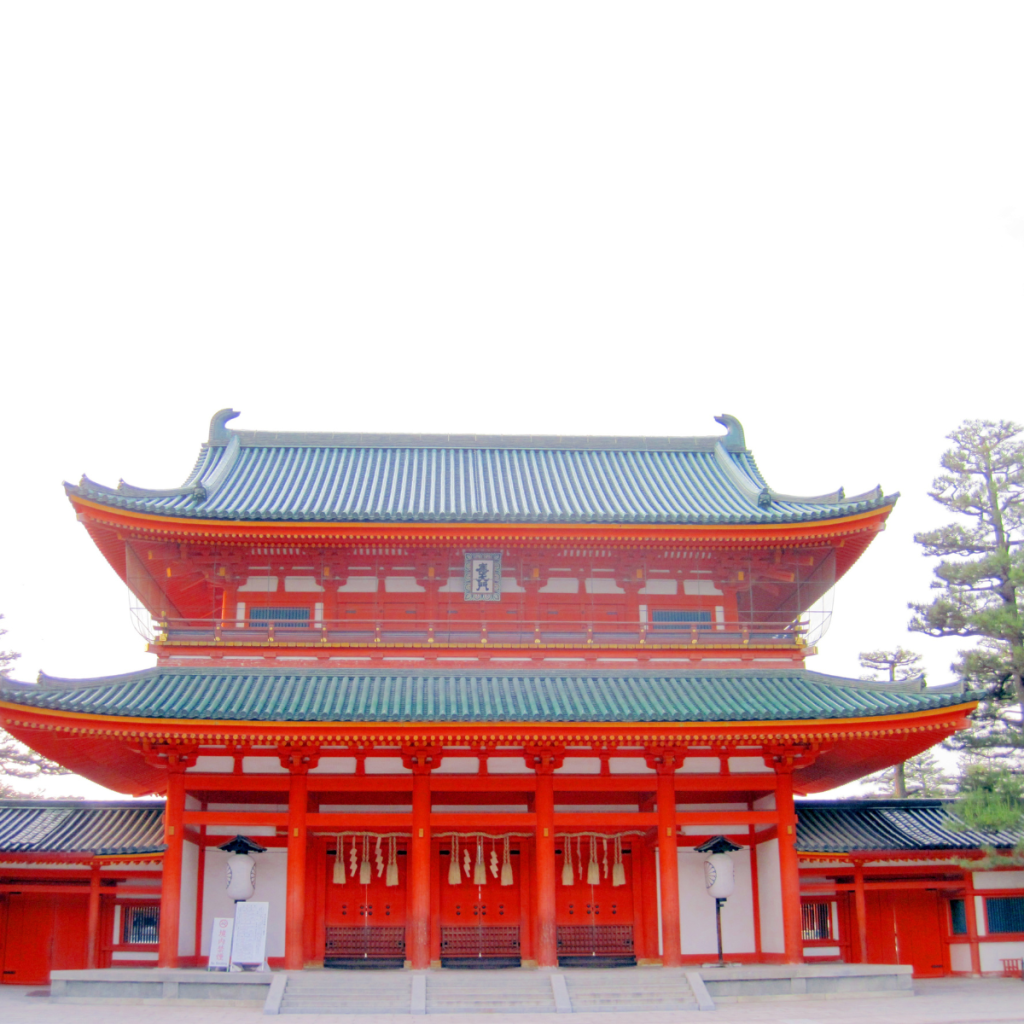
Date: Early June
An Enchanting Event at Heian Jingū Shrine
Every year on June 1st and 2nd, the historic Heian Jingū shrine in Okazaki area of Kyoto comes to life with an enchanting event called “Kyoto Takigi Nō” – a traditional torch-lit performance featuring nō theater. This captivating ritual has become increasingly popular among both local residents and international visitors seeking a unique taste of Japan’s rich cultural heritage.
The Captivating World of Nō and Kyogen Performances
Noh (能) is known as the oldest style of Japanese theater still practiced today, having originated over six hundred years ago. It features narrative music combined with stylized dance performances where actors wear elaborate costumes adorned with lacquered wooden masks. The themes presented in these plays often revolve around supernatural beings like gods, ghosts or tormented warriors sharing tales while walking amongst mortals.
Taue-sai Rice Planting Festival
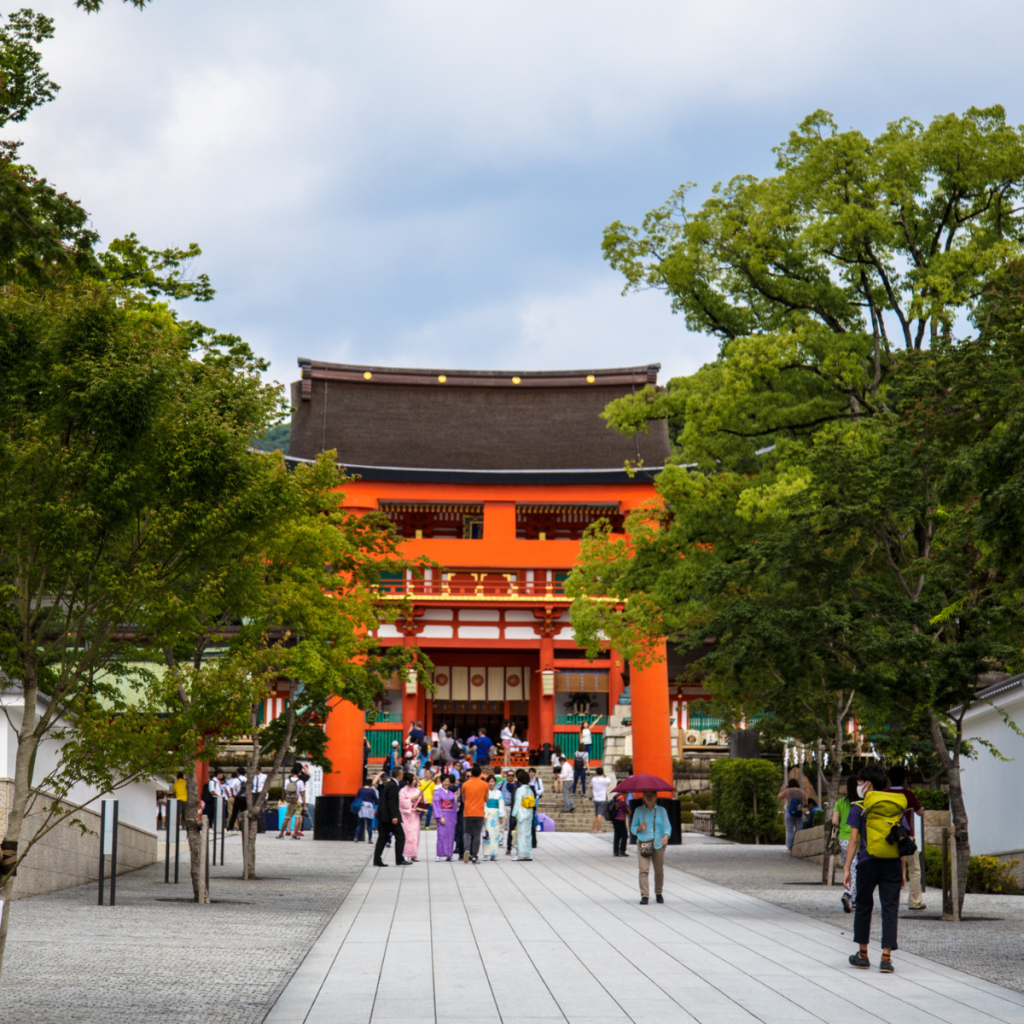
Date: Early June
Fushimi Inari Taisha Shrine Holds Traditional Taue-sai Rice Planting Festival
On June 10th, the famous Fushimi Inari Taisha shrine in Kyoto hosted the traditional Taue-sai festival, a highly revered event closely tied to Japan’s historic rice cultivation practices. The rituals held during this festival aim to symbolically bless the rice fields and honor Inari, the god of agriculture and business. Participants dressed in aged farming attire perform rituals on sacred grounds in hopes of ensuring a bountiful harvest.
Sacred Rice Fields – A Deep Connection to Inari
The connection between agriculture and Japanese culture carries great importance. Naturally adored for their steadfast influence on both irrigation systems and farmers’ fortunes through centuries of close associations with fertile land and water sources have made these relationship as old as time. The Fushimi Inari shrine itself contains a vital symbol of this tie—an explicitly dedicated rice paddy used annually in the tradition of providing rice offerings for Inari.
Honoring Inari Through Ritual Offerings
The festival began at 13:00 with priests, dancers, musicians, and planters gathering in the shrine’s main hall to initiate the ritual offering of various food items, including fish and vegetables. The sake presented to the gods further illustrates that local customs remain steeped in historic practices. Following this presentation sequence, the chief priest reads a fervent prayer aloud requests divine favor from deities.
An essential part of the ceremony is an intimate yet grandiose performance for a select audience—the ota-mai kagura dance transpires before any public exhibitions. The rice planting process is sanctified by blessings being bestowed upon the rice seedlings and the planters themselves – preparing them to commence the rice cultivation.
Sanctification Process of the Sacred Rice Field
Once the rituals in the main hall are complete, the retinue proceeds to the sacred rice field. A priest consecrates the area in preparation for planting, which is an enthralling spectacle for onlookers who revel in watching this slice of cultural history unfold before their eyes. With dancers performing harmoniously in the background and a rice planting song being sung, it’s an awe-inspiring sight to see artisans skillfully wade through waterlogged soil while sowing young rice plants.
Cultivating sacred seedbeds within Fushimi Inari Shrine strengthens local bonds between rice fields and community members. Through these rituals, residents pray for a prosperous harvest in the coming year and confirm their dedication to intricate traditions hailing from Japan’s storied past.
The Taue-sai festival provides not only an entertaining experience but also serves as an educational opportunity for those interested in delving into Japanese culture and history. The event paints a vivid picture of meticulous agricultural practices that have influenced generations of farmers in Japan while simultaneously paying tribute to Inari, guardian deity of fertility and abundance.
Hotaru bi no Chaka at Shimogamo Shrine
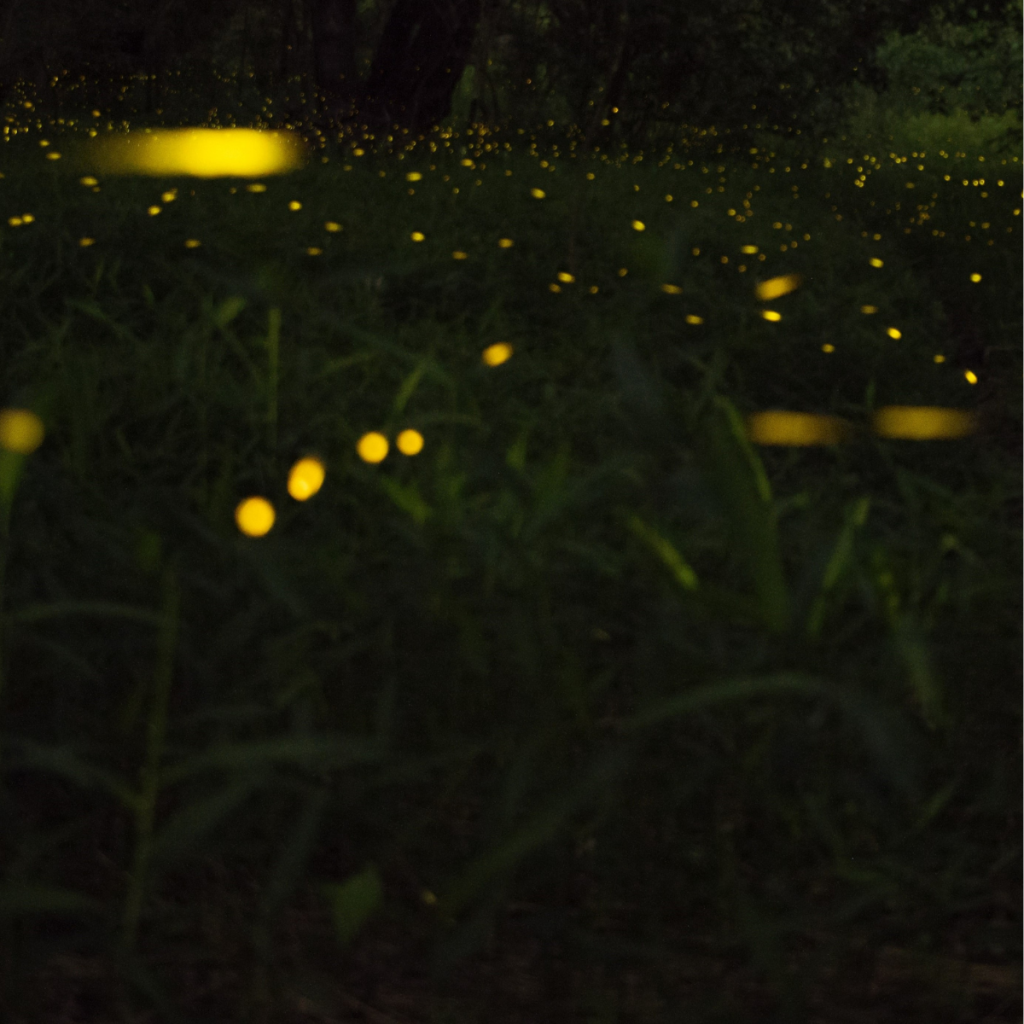
Date: early June
Among the many attractions hosted by Shimogamo Shrine is “Hotaru Bi No Chakai“, or literally translated as “Firefly Tea Ceremony”. This culturally rich tea gathering is traditionally held at the onset of June amidst a stunning display from hundreds of live fireflies – specifically around 600 – that fill up the surrounding atmosphere with their soft glow.
The deep-seated connection between this shrine and tea ceremonies traces back to the Kansho period (1441-1446). However, by Meiji era (1868 – 1912), these vibrant tea ceremonies harmonizing with flickering fireflies had become increasingly common. Unfortunately, due to circumstances surrounding the nationalization of shrines and climate pollution affecting area wildlife in 1940s Japan, the endearing events gradually receded into obscurity.
Strikingly though, decades after their disappearance in result to pollution issues during mid-twentieth century Japan, fireflies were reintroduced back into their habitats at Tadasu no Mori –”The Forest of Justice”. Their successful reintegration comes amidst recent efforts embarked upon by dedicated individuals keen on cleaning up and preserving this beautiful sanctum encircling Shimogamo Shrine.
Reisai Festival

Date: Mid June
The Reisai Festival, held annually at the Yasaka Shrine in Kyoto is distinguished by an ancient dance performance. Dating back to the Heian period, this performance serves as a ritual homage to the shrine’s gods. The traditional dance segment commences at 10:00am during the festive celebration.
Ajisai Matsuri
Date: Mid June
Japan Embraces the Beauty of Hydrangeas during Rainy Season
Every June and July, the streets of Japan come alive with the vibrant colors of hydrangeas (ajisai) blooming during the country’s rainy season. These beautiful blossoms feature a wide variety of colors depending on the pH of the soil they’re planted in, making them a captivating sight as they adorn gardens, roadsides, and city streets alike.
Hydrangeas are particularly stunning after a light rain, which is supplied aplenty during Japan’s rainy season. Recognizing the visual appeal of these flowers, many Japanese shrines and temples with ajisai-filled gardens hold special openings and events to celebrate the peak hydrangea season.
The Month-Long Celebration Commences Each June
Known as Ajisai Matsuri (Hydrangea Festival), this celebration comprises a month-long special opening of the shrine’s two hydrangea gardens from early June.
Special events — such as musical performances, rituals, and sports demonstrations — take place on selected days throughout the festival. The dates and performance line-ups may vary each year, but one thing remains constant — visitors can expect plenty of remarkable sights and experiences.
A Feast for the Senses: Performances and Ceremonies at Ajisai Matsuri
The diverse array of cultural offerings during Ajisai Matsuri serves as an ever-changing offering to the gods. Visitors may witness ritual tea ceremonies, energetic taiko drum performances, or even a kemari ball game.
To further immerse festival attendees in the rich Japanese culture, poetry readings and short displays of old court-style instrumentals and dances are also showcased. With such a wide assortment of cultural events to enjoy alongside the beautiful gardens, Ajisai Matsuri becomes a must-see trip imbued with culture and entertainment.
Indulging in Hydrangea-Themed Cuisine During Ajisai Matsuri
As visitors stroll through the picturesque gardens during the Ajisai Matsuri, they will also have the opportunity to indulge in hydrangea-themed food. The mouth-watering culinary creations add another layer of enjoyment to an already unforgettable experience.
Experience the Magic of Japan’s Rainy Season at Ajisai Matsuri
The annual celebration of hydrangeas at Fujinomori Shrine’s Ajisai Matsuri is a mesmerizing way for locals and tourists alike to appreciate Japan’s natural beauty during the rainy season. From the vibrant colors of hydrangeas to the captivating cultural performances, this event offers a unique and memorable experience not to be missed by anyone visiting Kyoto during June and July.
Green-Leaf Festival at Chishaku-in Temple
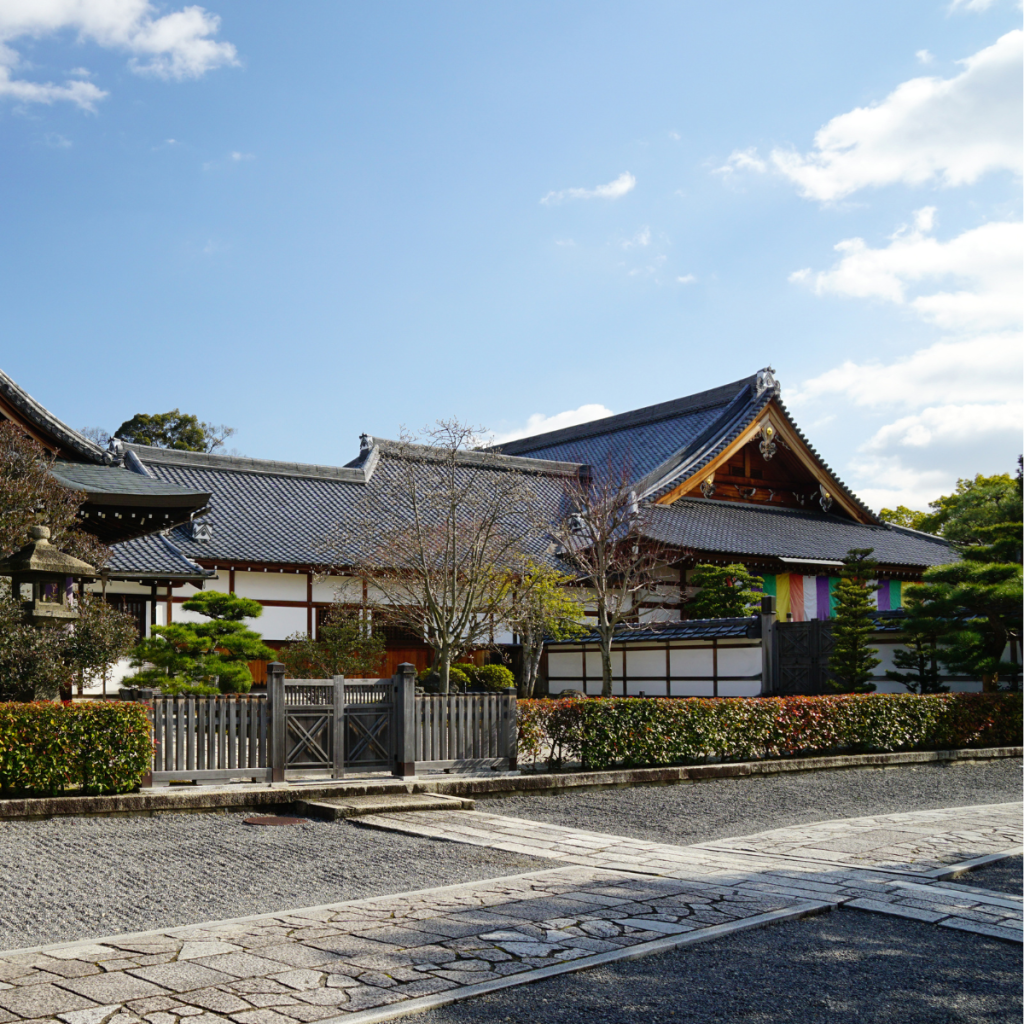
Date: Mid June
Chishaku-in Temple, a renowned sanctuary in Kyoto and the head temple of the Chizan School of Shingon Buddhism, adds a unique hue to the city’s vibrant festival calendar with the Aoba Matsuri, also known as the Green-Leaf Festival. This annual event, held every June, is a spiritual celebration that commemorates Kōbō Daishi, the founder of Shingon Buddhism.
Fire Ritual Honors Founder of Shingon Buddhism
During the Aoba Matsuri, attendees not only pay tribute to Kōbō Daishi, but can also witness and participate in a unique fire ritual – Goma ritual. This practice symbolizes purification and is designed to clear away negative karma. It acts as a bridge connecting people to their spiritual roots and enhancing blessings from deities.
Takekiri-eshiki
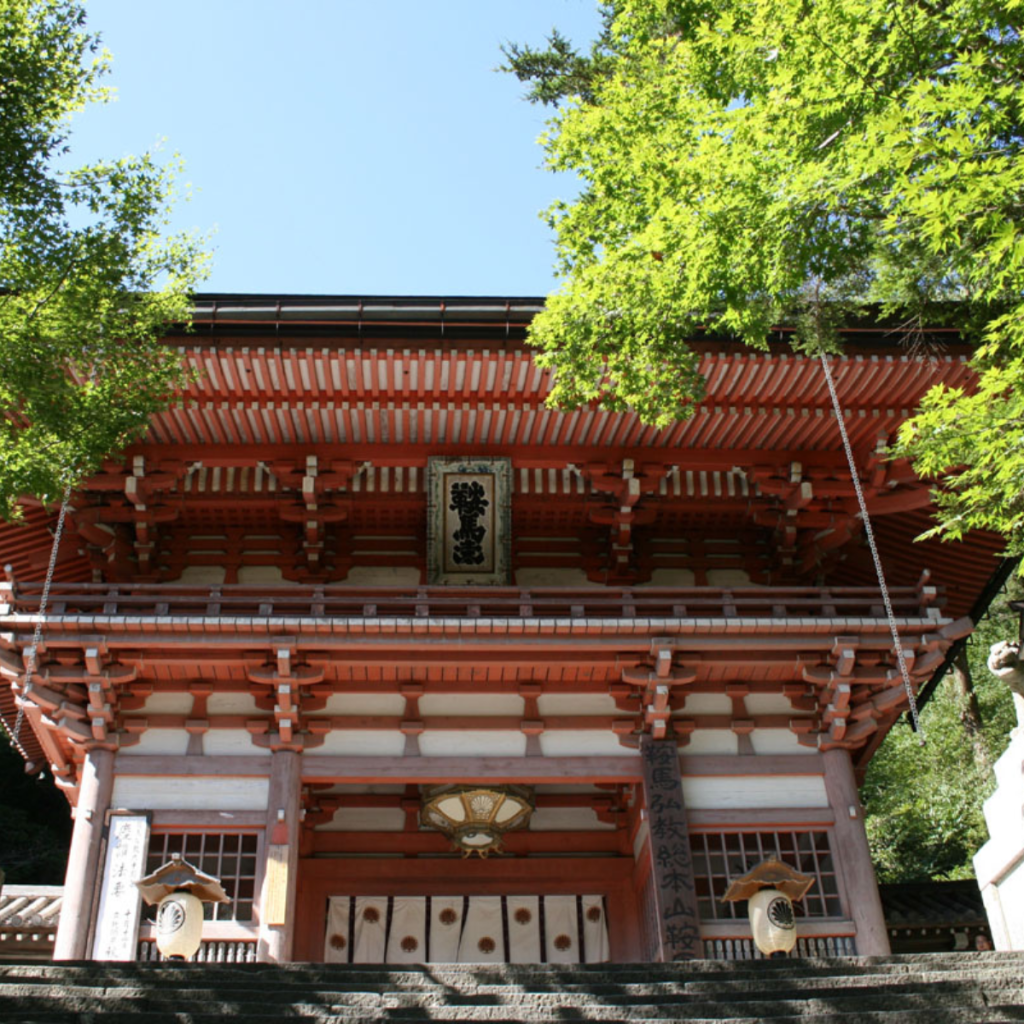
Date: Mid June
The Legend and History of Takekiri-eshiki
Every year in June, the Kurama-dera Temple in northern Kyoto, Japan hosts the Takekiri-eshiki festival. This annual event is steeped in a rich history and tradition dating back to the temple’s founding by a Chinese monk in 770. Situated on the slopes of Mount Kurama, the temple has a deep-rooted connection with nature, which is reflected through numerous rituals held throughout the year.
The Takekiri-eshiki festival, also known as Bamboo Cutting Festival, is based on an ancient legend about a monk who battled supernatural serpents. The story goes that the monk slew a giant serpent, and today, lengths of bamboo are used as surrogates for the serpent in this symbolic re-enactment.
The Festival Proceedings: Memorial Service, Court Dance, and Fierce Competition
Takekiri-eshiki begins with a memorial service held inside Kurama-dera Temple. The service honors nature, grains, and water as expressions of gratitude for their life-giving properties. Following this solemn ceremony, participants engage in bugaku—a traditional court dance—and practice cutting bamboo poles.
The highlight of the event is when two teams of local men dressed as warrior monks (yamabushi) compete against each other using great strength and skill to slice thick bamboo poles into six pieces as quickly as possible. This thrilling competition sets Takekiri-eshiki apart from other more sedate rituals.
A Rich Cultural and Educational Experience for Visitors
Visitors to Kurama-dera during the Takekiri-eshiki are treated to an exciting cultural experience that provides insight into Japanese folklore and customs. Observing the powerful and intense energy of the bamboo-cutting contest, spectators can appreciate the dexterity and skill involved in this age-old competition.
Furthermore, the divination aspect of Takekiri-eshiki is noteworthy. The results of the ritual cutting are believed to predict crop futures in surrounding areas. As such, this event is not only deeply spiritual but also practical, as it reflects a belief in nature’s influence on agricultural yield.
For those interested in the intersection of culture and nature, a visit to Kurama-dera during the Takekiri-eshiki festival promises to be an unforgettable experience.
Kyoto Antique Fair
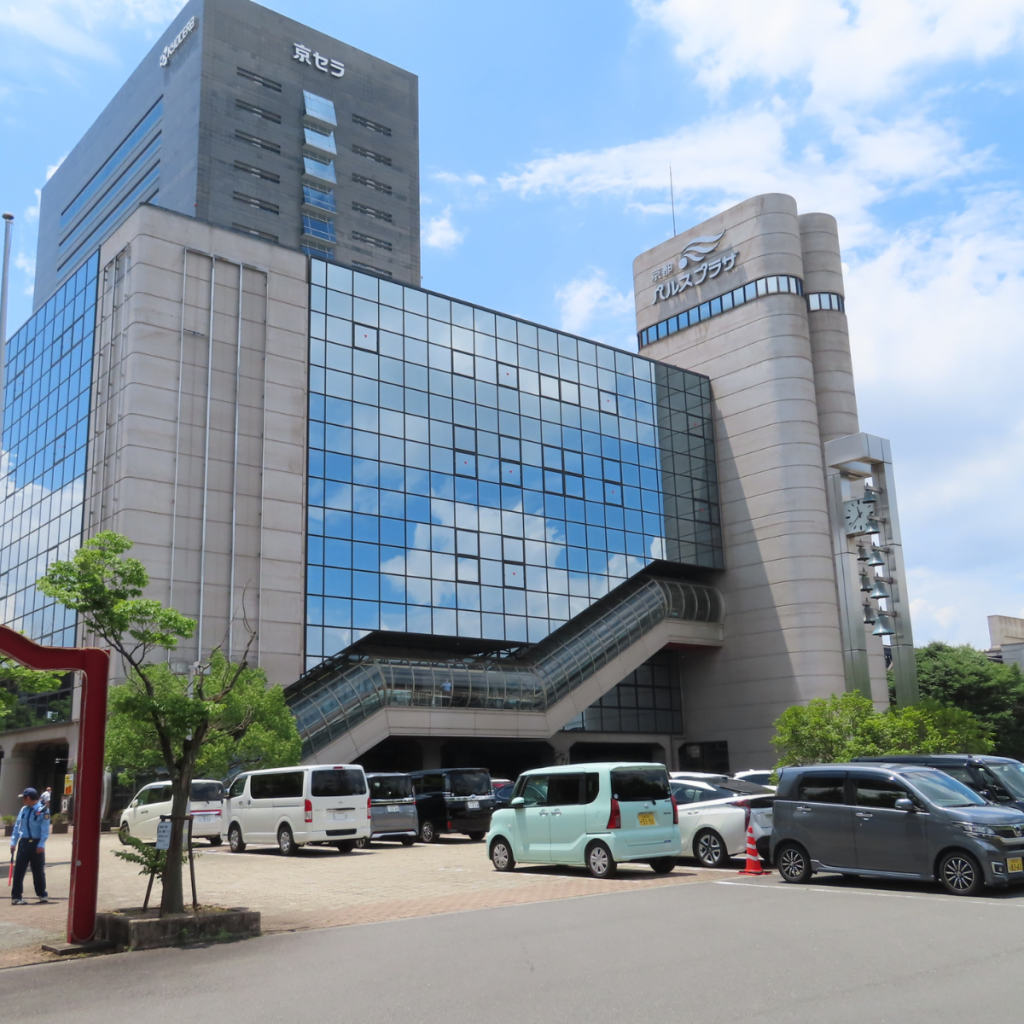
Date: June 30th
A Classic Japanese Tradition
Kyoto, a city known for its vibrant history and rich culture, stands as a hub for antique enthusiasts. Regularly hosting antique markets at various venues such as temples, shrines, and parks, it has been attracting not just local residents, but also people from across the country and overseas. However, amongst these, the most awaited event is the Kyoto Antique Fair with more than two decades of history.
International Crowd-Puller
Kyoto Antique Fair’s popularity spans globally. With tourists already fascinated by the charm of Kyoto’s traditional architecture and lifestyle, this fair acts as another magnet bringing in many foreigners who visit as part of their travels.
Kyoto Antique Fair: A Seasonal Delight
The antique fair is held thrice annually – in spring, early summer, and late autumn. Over a span of three long days – Friday to Sunday – the event attracts countless bargain hunters, vintage lovers and curious observers making it an always bustling affair.
Umekoji Park Handicrafts Market
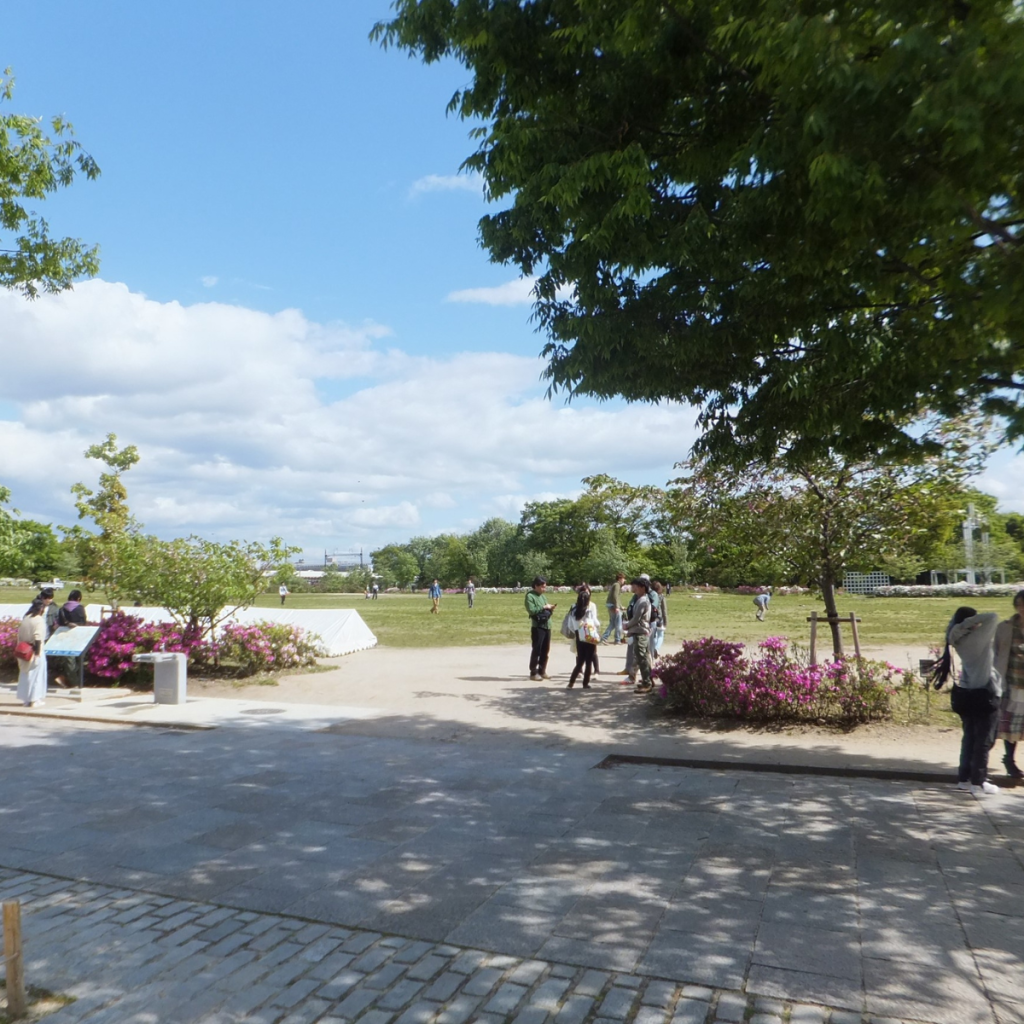
Date: First saturday of June
If you’re visiting Kyoto during the first Saturday of a month (except January and May), make sure to stop by the Umekoji Park Handicrafts Market for a memorable experience filled with handmade treasures, delicious treats, and heartwarming moments spent with your loved ones.
Umekoji Park, a popular destination located just 10 minutes by bus from Kyoto Station, is home to the bustling Umekoji Park Handicrafts Market. Held on the first Saturday of every month (except January and May), the market attracts both locals and tourists with its beautiful surroundings and an enticing selection of handmade items. With around 300 stalls and welcoming approximately 3,000 visitors per month, it’s no wonder the market has become a favorite for families with children, allowing them all to enjoy the serene ambiance and explore the unique offerings.
Handmade Accessories
At this well-attended craft fair, shoppers will find a plethora of earrings, rings, and other accessories handcrafted by talented artisans. Each piece boasts individuality and whimsical designs that simply cannot be found in mass-produced items. From delicate to statement-making pieces, these stalls are sure to captivate those searching for exceptional and personalized accessories.
Pottery: A Taste of Kyoto’s Artisanal Talent
Kyoto is renowned for its Kiyomizu-yaki pottery, and the Umekoji Park Handicrafts Market offers an excellent opportunity to discover a variety of handmade pieces. Shoppers can choose from an array of items like cups, rice bowls, plates, clay pots, and smaller artisanal crafts—all at reasonable prices. Additionally, many vendors display pottery adorned with unique color palettes—an appealing way to enliven any dining room table.
Bread and Sweets: Delight Your Taste Buds
The market isn’t only about artisanal crafts; it also features numerous stalls selling a mouthwatering selection of homemade baked goods and sweets. Visitors can indulge in everyday sliced bread or enjoy tempting options like jams, waffles, and Canelé—made additive-free using high-quality ingredients. Umekoji Park’s vast green field provides the perfect setting for an impromptu picnic, creating a lovely opportunity for families and friends to unwind and enjoy their delicious purchases.
Interior and Kitchen Utensils: Enhance Your Home
Looking for unique items to spruce up your home? The Umekoji Park Handicrafts Market has you covered. In addition to kitchen essentials like chopping boards handcrafted from natural materials, the market offers a variety of cool interior and lifestyle goods to elevate your living spaces. Shoppers can expect to find many charming pieces designed with nature in mind.
Make the Most of Your Visit
It’s important to note that participating stalls are chosen through a random lottery system, meaning they may not be at the market every month. This continuous rotation adds an element of surprise, inviting visitors back to experience new vendors time after time.
Besides the Handicrafts Market itself, Umekoji Park is home to diverse attractions like the Kyoto Aquarium and Kyoto Railway Museum. The expansive grassy field makes it an ideal place for children and adults alike—highlighting why this park is one of the best family-friendly destinations in Kyoto.
Nagoshi no Harae
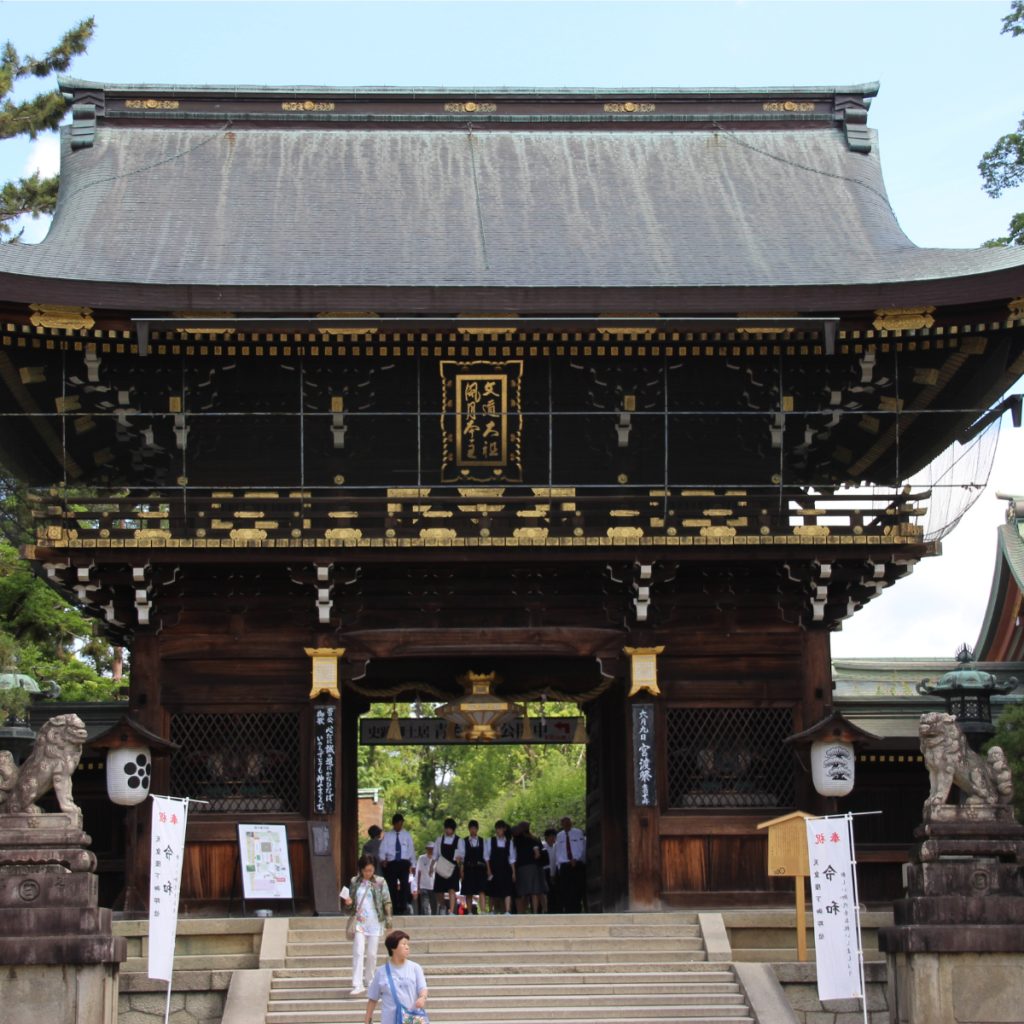
Date: Late June
Ancient Japanese Rite Offers a New Beginning for the Second Half of the Year
The ancient Shinto purification rite, Nagoshi no Harae, is held on June 30th each year across Japan, allowing people to cleanse themselves of misdeeds committed in the first half of the year and pray for health and fortune in the months to come. This traditional summer purification ritual also provides participants with a unique and fascinating cultural experience.
Origins of Nagoshi no Harae
The history of Nagoshi no Harae dates back to the Nara Period (710-794). This great purification ceremony was initially performed twice per year during the last days of the sixth and twelfth lunar calendar months at the Imperial court and Shinto shrines. However, due to events such as the Onin War (1467-77), only the sixth-month ritual continued to thrive, evolving into today’s Nagoshi no Harae.
This purification ritual’s origins are rooted in an ancient Japanese legend about the wandering god Susano’o no Mikoto. A poor man named Somin Shorai provided shelter for the god disguised as a traveler. Recognizing Somin’s generosity, Susano’o presented him with a chinowa wreath woven from reeds and instructed him to wear it as protection. Consequently, Somin and his descendants escaped plague and illness that plagued their land. As a result, passing through a large Nagoshi no Harae chinowa wreath is believed to ward off disaster and misfortune, cleansing participants of their wrongdoings.
Iconic Kyoto Shrines Hold Celebrations
Several famous Kyoto shrines join in hosting Nagoshi no Harae events. Kitano Tenmangu Shrine, home to Kyoto’s largest chinowa (approximately five meters in height), welcomes devotees to partake in the purification ritual. Kamigamo Shrine also performs the ceremony, distributing paper dolls to participants who later float them down the river to cleanse themselves of misfortune. Yoshida Shrine is another popular host site; faithful who offer a doll amulet may receive a wreath in return.
The Sweltering Summer Purification Ceremony
In the sweltering heat of the Japanese summer, the ritual sees worshippers pass through a chinowa, a large ring of woven grass or miscanthus reeds known as chigaya. This passage symbolizes the elimination of faults, bad luck, and illness—allowing for a clean slate moving forward. Chinowas are typically set up under a shrine’s torii gate or its main hall (haiden).
A Renewed Chance for Redemption
Nagoshi no Harae allows participants to atone for their sins during the first half of the year and offers a renewed opportunity for personal growth and prosperity in the remaining months. The ritual’s significance continues to resonate with modern communities across Japan.
To participate in Nagoshi no Harae, join the crowds led by priests on June 30th at various Shinto shrines or try it solo by bowing and passing through the chinowa wreath three times while reflecting on your year. Alongside this rite, seasonal sweets such as “minazuki,” steamed cakes topped with azuki beans, are sold during this period.
With its rich cultural history, symbolic significance, and strong ties to legendary tales, Nagoshi no Harae offers an unforgettable experience steeped in ancient Japanese tradition.
Heian Raku Ichi Market
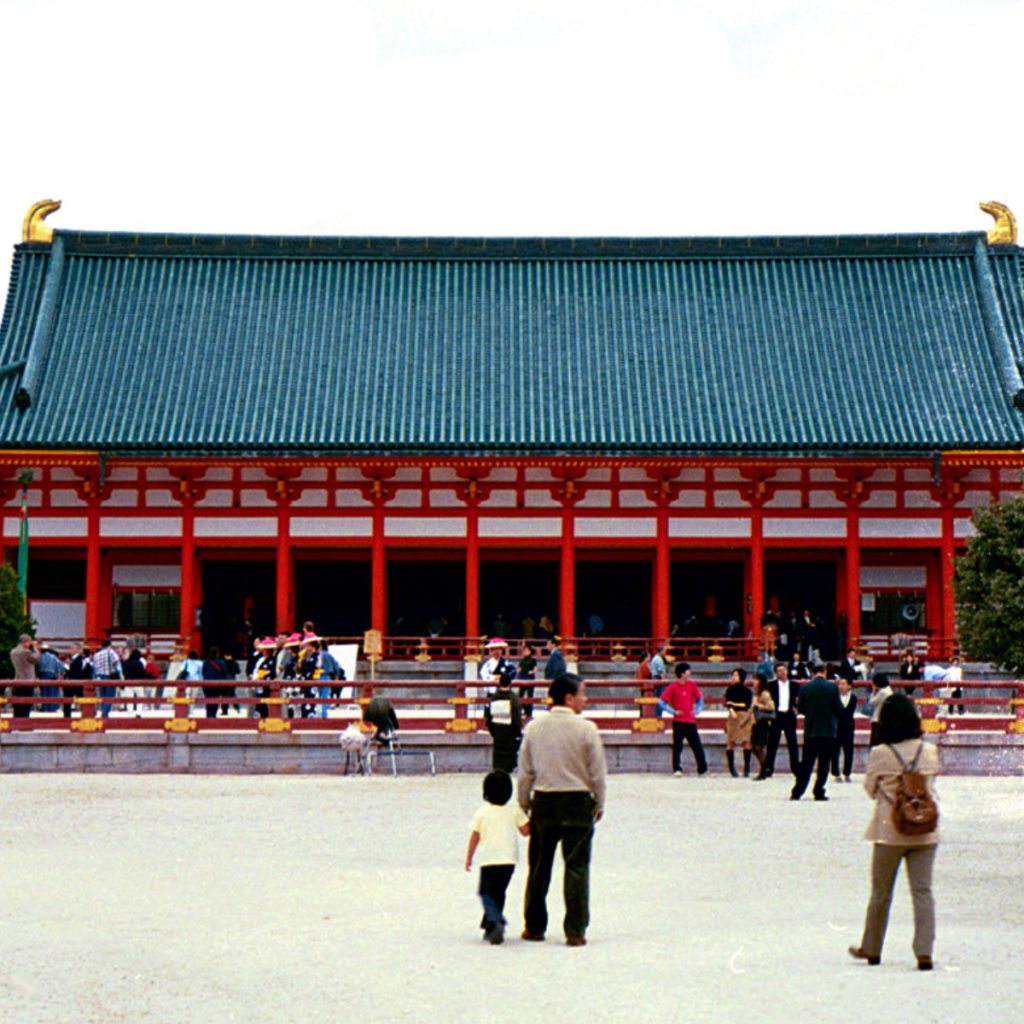
Date: Mid June (Usually every second saturday of the month)
The Market Experience
The Heian Raku Ichi Market, positioned just outside the esteemed Heian Jingu Shrine, has been captivating visitors with its extraordinary range of handcrafted items. Set in the picturesque Okazaki Park, this immense crafts market boasts more than 250 stalls that cater to a spectrum of interests. Held on the second Saturday of every month, tourists and locals alike are drawn to its lively atmosphere and unique offerings.
From handmade crafts and pottery to traditional Japanese trinkets and mouthwatering treats, there is something for everyone at the Heian Raku Ichi Market. With so much variety available in a single location, it’s no wonder that it has become a sought-after destination for visitors from across the globe.
Embark on a Handcraft Adventure
One could easily spend hours browsing through handcrafted items at the market. Everything sold at Heian Raku Ichi is entirely handmade, giving each product a personal touch that cannot be replicated. Some popular finds include soft stuffed toys, coin purses, bags, and other accessories featuring intricate Japanese designs. For those on the lookout for one-of-a-kind souvenirs or gifts, this market offers an abundance of options.
Discover Japanese Pottery Masterpieces
In addition to handcrafted items, pottery lovers will find themselves in paradise at Heian Raku Ichi. Talented artisans display their handcrafted Japanese dishware such as plates, cups, bowls, and other unique pieces not typically found in western stores. These distinctive items can bring life to any dining table and make excellent gifts for those who appreciate Japanese ceramics.
Treat Your Taste Buds with Handmade Food
Of course, no market experience would be complete without delicious food options. Consistent with the handcraft theme of Heian Raku Ichi Market, various food trucks offer handmade bread, Japanese sweets, and hot beverages. As you explore the market, indulge your senses with these delectable treats and take a break to sit in the surrounding Okazaki Park.
Enjoy a Picnic in Okazaki Park
During the market, benches are conveniently placed throughout Okazaki Park, providing a relaxed setting for visitors to enjoy their food purchases. Grab your friends and family and savor a delightful picnic as you soak in the park’s lush scenery and soothing atmosphere.
Tips
For those planning to attend Heian Raku Ichi Market, it’s essential to arrive early as crowds can swell after 12 p.m. The serene morning hours provide a more relaxed experience for shoppers to leisurely peruse the stalls without feeling overwhelmed. Once you have completed your exploration of the market, don’t forget to visit nearby attractions such as Heian Jingu Shrine, Kyoto City KYOCERA Museum of Art, and Kyoto City Zoo.
The Heian Raku Ichi Market is an incredible destination for anyone visiting Kyoto, offering a diverse assortment of handcrafted items, pottery masterpieces, and delicious food experiences. With its monthly occurrence and stunning setting in Okazaki Park, this market provides an unforgettable shopping experience that cannot be missed.
Toji Kobo Market
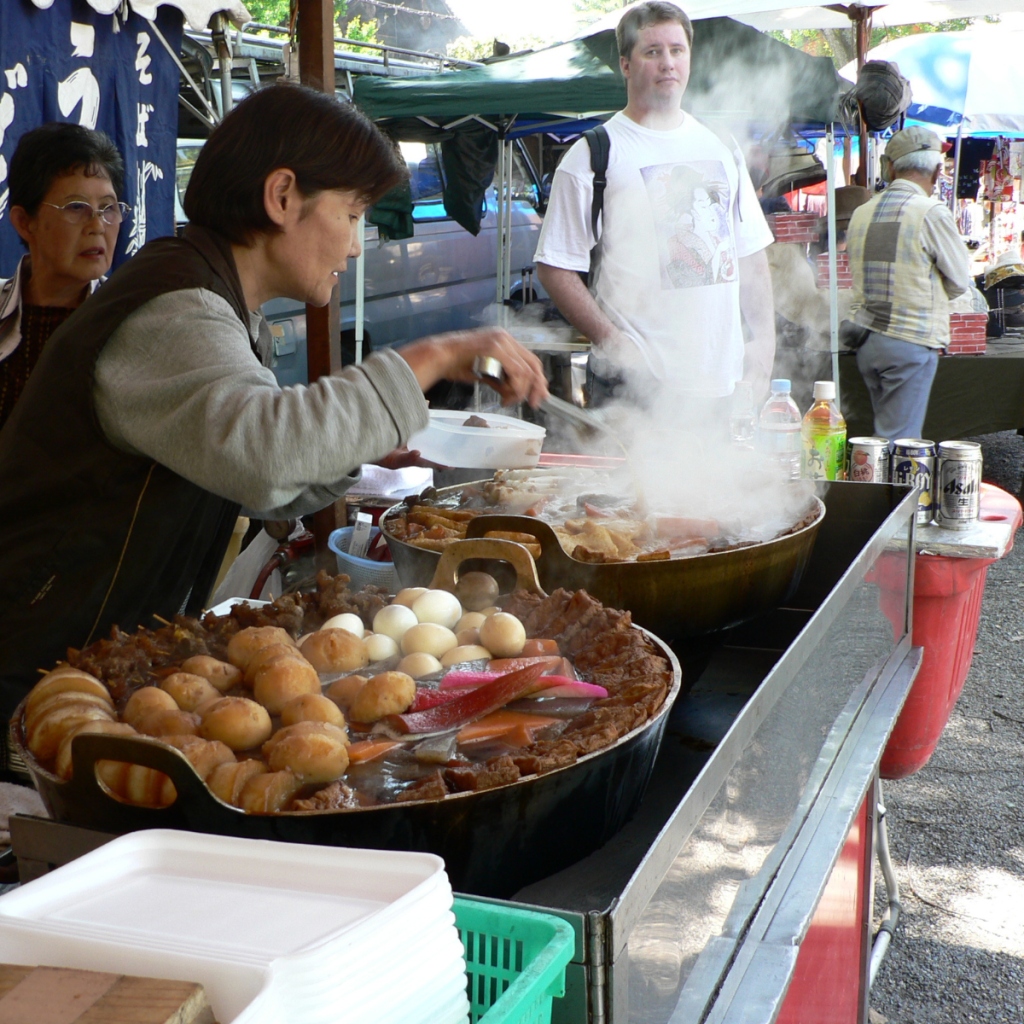
Date: June 21st
A Historical Market
The Toji Kobo Market, a beloved shopping destination for over 700 years, attracts locals and tourists alike on the 21st of every month. As a historical market, it is situated within the grounds of the famous Toji Temple, near Kintetsu railway’s Toji Station. Known for its impressive five-story pagoda, the temple transforms into a bustling marketplace one day each month.
Diverse Stalls and Rare Finds
With around 1,000 stalls offering a wide range of merchandise, including textiles, antiques, ceramics and food items, shoppers can expect to find unique products unavailable elsewhere. From expertly crafted tea cups and pottery to one-of-a-kind trinkets and souvenirs, the Toji Kobo Market offers an eclectic variety that caters to all tastes.
Uncovering Hidden Gems at Affordable Prices
Prices at the market vary greatly; customers can find items priced as low as ¥500. Since many stall owners do not speak English fluently, communication might be challenging for international visitors. However, with patience and some basic Japanese phrases in hand, one can potentially discover hidden gems amidst the market’s vast offerings.
Cultural Immersion and Conversations with Local Artisans
One of the highlights of visiting the Toji Kobo Market is the opportunity to engage with local artisans directly. Stall owners often create their products themselves, so feel free to ask about their craft or share your appreciation for their work. Be prepared to experience potential language barriers when conversing with these vendors.
Tantalizing Food and Drinks
Don’t forget to sample various delicious dishes available at numerous food stalls within the market. Options include mouth-watering yakisoba and warming oden dishes. For those seeking refreshment after a long day of shopping, ice-cold beer and other alcoholic beverages are also available for purchase.
Etiquette and Tips for Visiting the Market
When browsing items at the Toji Kobo Market, ensure you handle all goods with care. Any trash generated during the visit should be properly disposed of in provided rubbish bins scattered throughout the marketplace.
The Toji Kobo Market is a must-see destination for those interested in experiencing traditional Japanese market culture, possibly unearthing rare finds, and engaging with local artisans. Remember to mark your calendar for the 21st of every month to enjoy this unique shopping experience steeped in history.